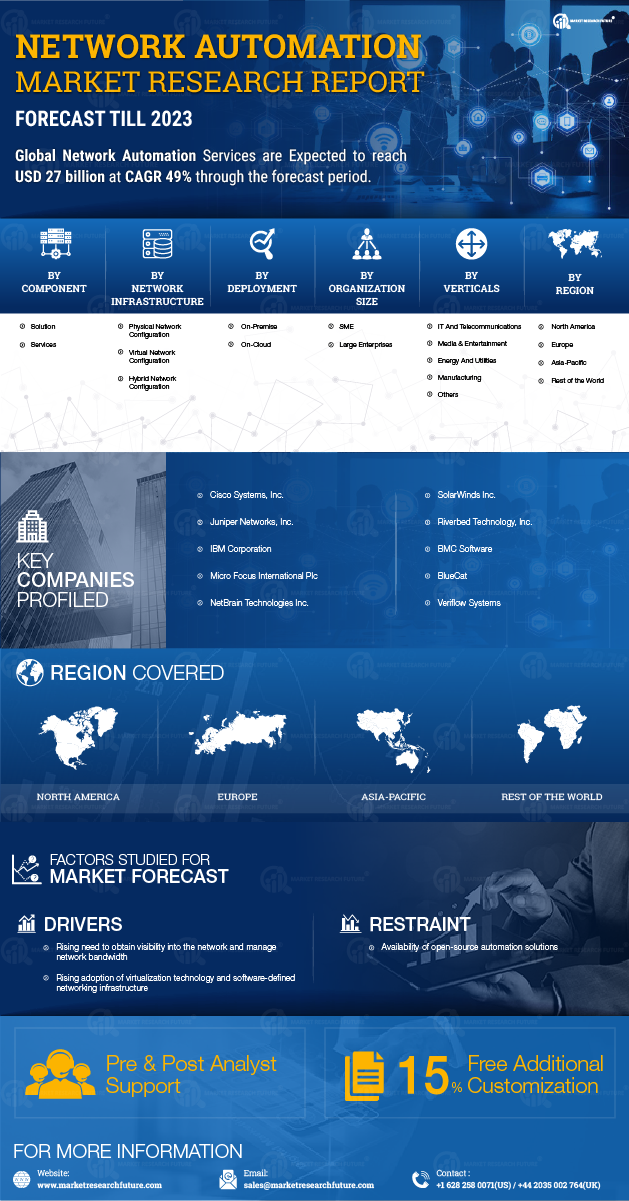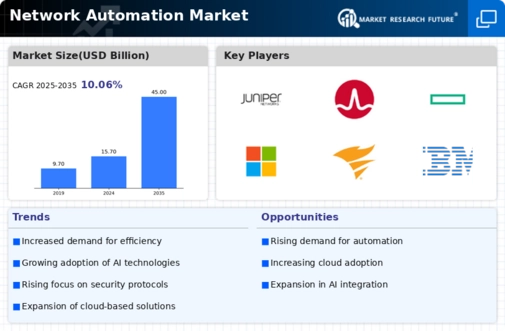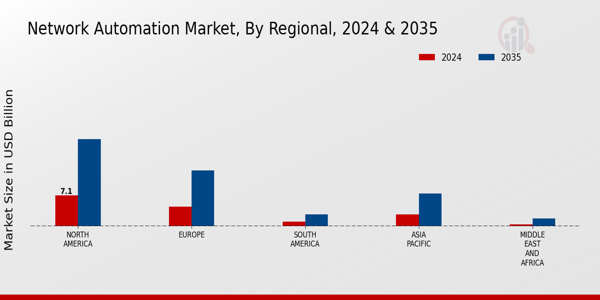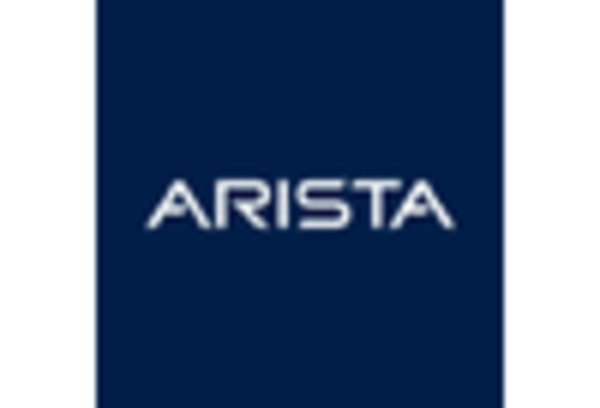Shift Towards DevOps Practices
The Network Automation Market is witnessing a shift towards DevOps practices, which emphasize collaboration between development and operations teams. This paradigm shift encourages the adoption of automation tools that facilitate continuous integration and delivery. As organizations strive to enhance their software development processes, the integration of network automation becomes essential. Research suggests that companies implementing DevOps practices can achieve a 20% increase in deployment frequency. This trend is likely to propel the Network Automation Market forward, as businesses recognize the value of automating network operations to support agile development methodologies.
Adoption of Cloud-Based Solutions
The Network Automation Market is significantly impacted by the widespread adoption of cloud-based solutions. As organizations migrate to cloud environments, the need for automated network management becomes paramount. Cloud-based automation tools offer scalability and flexibility, enabling businesses to manage their networks more effectively. Recent statistics indicate that over 60% of enterprises are utilizing cloud services, which necessitates robust network automation solutions. This trend is expected to fuel the growth of the Network Automation Market, as companies seek to optimize their cloud networks and enhance overall performance.
Growing Focus on Network Security
The Network Automation Market is increasingly shaped by the growing focus on network security. With cyber threats becoming more sophisticated, organizations are prioritizing the automation of security protocols to protect their networks. Automated security solutions can respond to threats in real-time, significantly reducing the risk of breaches. Data shows that organizations that implement automated security measures can reduce incident response times by up to 50%. This heightened emphasis on security is likely to drive growth in the Network Automation Market, as businesses seek to safeguard their networks while maintaining operational efficiency.
Rising Demand for Operational Efficiency
The Network Automation Market is experiencing a notable surge in demand for operational efficiency. Organizations are increasingly seeking to streamline their network operations to reduce costs and enhance productivity. According to recent data, companies that implement network automation can achieve up to a 30% reduction in operational costs. This trend is driven by the need for faster service delivery and improved network performance. As businesses expand their digital footprints, the complexity of network management increases, necessitating automated solutions. The Network Automation Market is thus positioned to grow as enterprises prioritize efficiency and agility in their operations.
Increased Complexity of Network Infrastructure
The Network Automation Market is significantly influenced by the growing complexity of network infrastructures. As organizations adopt more sophisticated technologies, including IoT and 5G, the management of these networks becomes increasingly challenging. This complexity drives the need for automation tools that can simplify network management and enhance visibility. Data indicates that over 70% of IT professionals report difficulties in managing their networks due to this complexity. Consequently, the Network Automation Market is likely to expand as businesses seek solutions that can effectively manage intricate network environments while ensuring reliability and performance.



















Leave a Comment